Learn through the super-clean Baeldung Pro experience:
>> Membership and Baeldung Pro.
No ads, dark-mode and 6 months free of IntelliJ Idea Ultimate to start with.
Last updated: July 2, 2023
Data science is an interdisciplinary field that involves extracting insights and knowledge from structured and unstructured data. It combines elements of mathematics, statistics, computer science, and domain expertise to analyze and interpret complex data sets.
In this tutorial, we’ll start with the definition of data science. Then, we’ll discover different aspects of data science.
Data science is a multidisciplinary field that combines statistical analysis, machine learning, and computer science. It’s useful to extract meaningful insights and knowledge from large and complex data sets. This branch of computer science involves applying various techniques, algorithms, and tools to collect, organize, process, analyze, and interpret data:
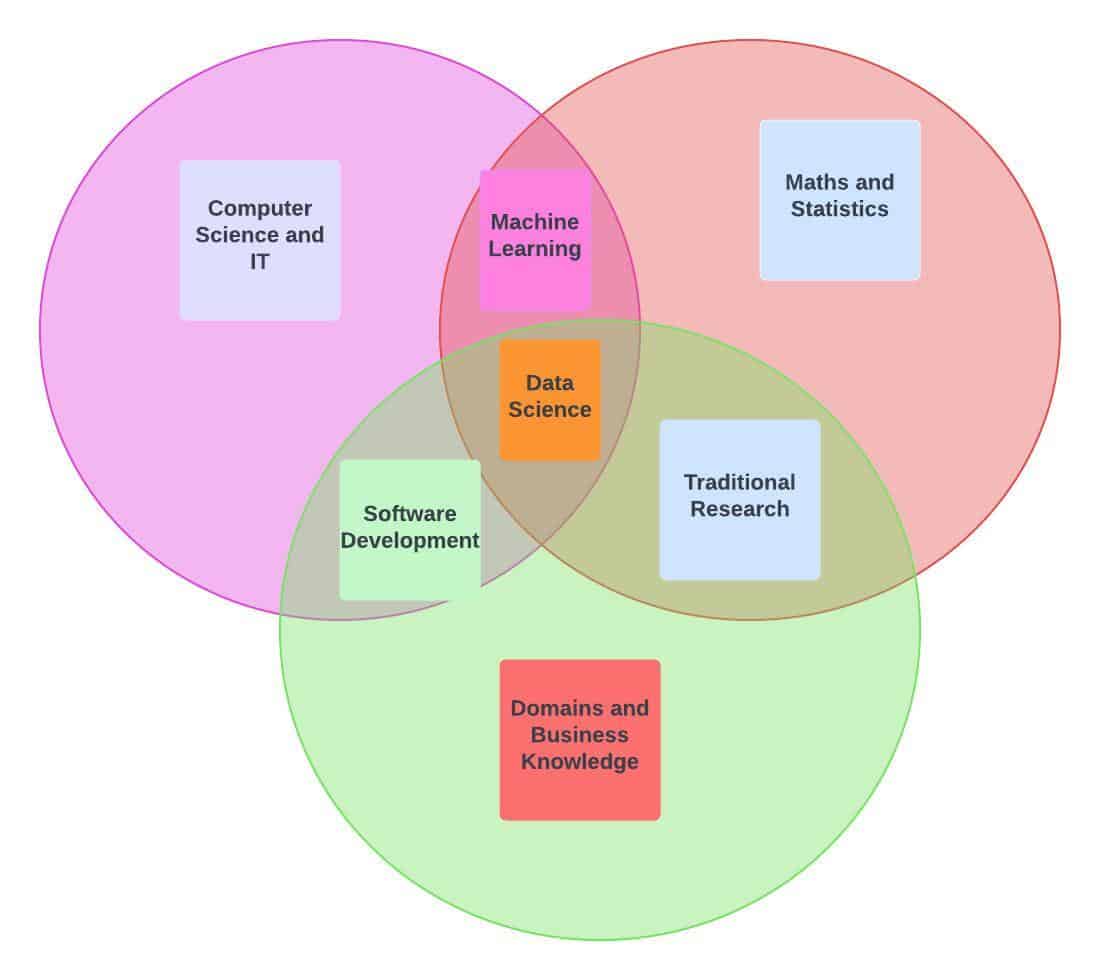
The primary goal of data science is to uncover patterns, trends, and correlations within data to make informed decisions and predictions.
Data scientists use various techniques, tools, and programming languages to collect, clean, and preprocess data before applying statistical models, machine learning algorithms, and data visualization techniques to extract meaningful insights.
Data science encompasses various activities, including data collection and storage, data cleaning and preprocessing, exploratory data analysis, feature engineering, model selection and training, evaluation and validation, and communicating results.
It’s commonly used in industries such as finance, healthcare, marketing, e-commerce, social media, and many others to drive decision-making, improve business processes, and gain a competitive edge.
Overall, data science aims to transform raw data into actionable knowledge that can drive data-driven decision-making and solve complex problems.
Data scientists use their expertise in mathematics, statistics, programming, and domain knowledge to formulate relevant questions, design experiments, and create models that can process and analyze data.
They usually work with diverse data sources, including structured data (such as databases and spreadsheets) and unstructured data (such as text, images, and videos). Data science also encompasses data visualization techniques to present findings in a clear and understandable manner. The lifecycle is shown in the following figure:
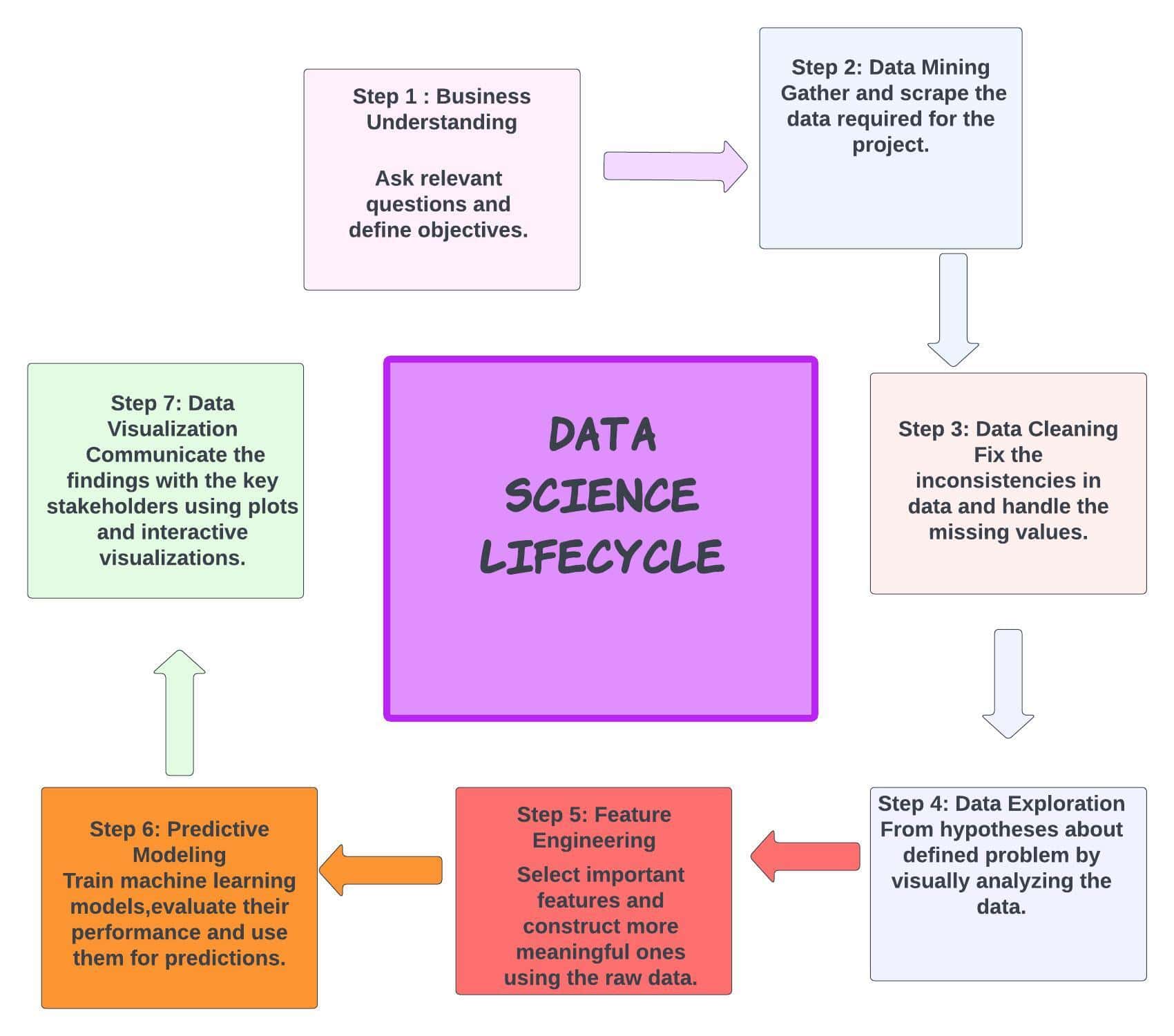
Let’s dive into the data science lifecycle.
Business understanding is a crucial step in data science and analytics projects. It involves gaining a comprehensive understanding of the specific challenges or opportunities that the organization or business is facing and how data analysis can help address those issues. It requires collaboration between data scientists and stakeholders to define the problem, set clear objectives, and align the analysis with the business goals.
Thanks to business understanding, data scientists can design and execute data analysis projects that’s specifically tailored to address the challenges and meet the organisation’s objectives. It ensures that the analysis is focused, relevant, and aligned with the strategic goals of the business.
Data acquisition refers to the process of collecting or obtaining raw data from various sources for analysis and further use in data-driven projects. It involves capturing data from different types of sources, such as databases, files, sensors, web APIs, social media platforms, or manual data entry.
Data acquisition is a crucial step in the data science lifecycle as it lays the foundation for subsequent data exploration, analysis, and modelling. It’s essential to acquire high-quality and relevant data to obtain accurate insights and make informed decisions in data-driven projects.
Data preparation, also known as data preprocessing or data cleaning, is the process of transforming and structuring raw data into a clean and usable format for further analysis. This involves a series of tasks aimed at improving data quality, addressing missing values, handling outliers, standardizing formats, and preparing the data for modelling or analysis:
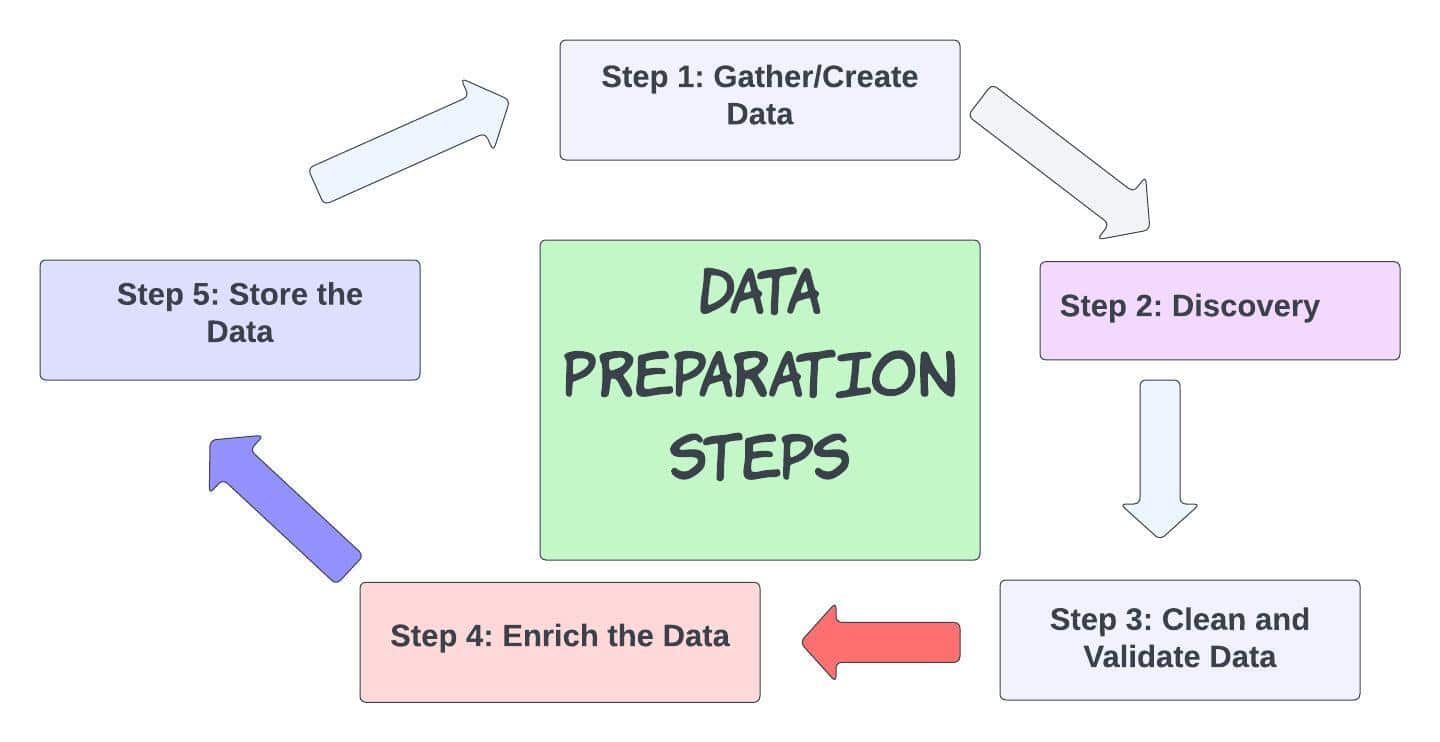
The goal of data preparation is to ensure that the data is accurate, consistent, and in a format suitable for analysis. Proper data preparation enhances the effectiveness and reliability of subsequent modelling, analysis, and decision-making processes. It plays a critical role in data science and machine learning projects, as the quality and preparation of the data significantly impact the outcomes and insights derived from the analysis.
Explanatory data analysis, also known as exploratory data analysis (EDA). This step is a crucial initial step in the data analysis process. It involves examining and visualizing the data to gain insights, understand the patterns, and identify relationships between variables. The primary objective of EDA is to discover the underlying structure of the data and generate hypotheses for further research.
During explanatory data analysis, data scientists use statistical and graphical techniques to summarize and explore the data.
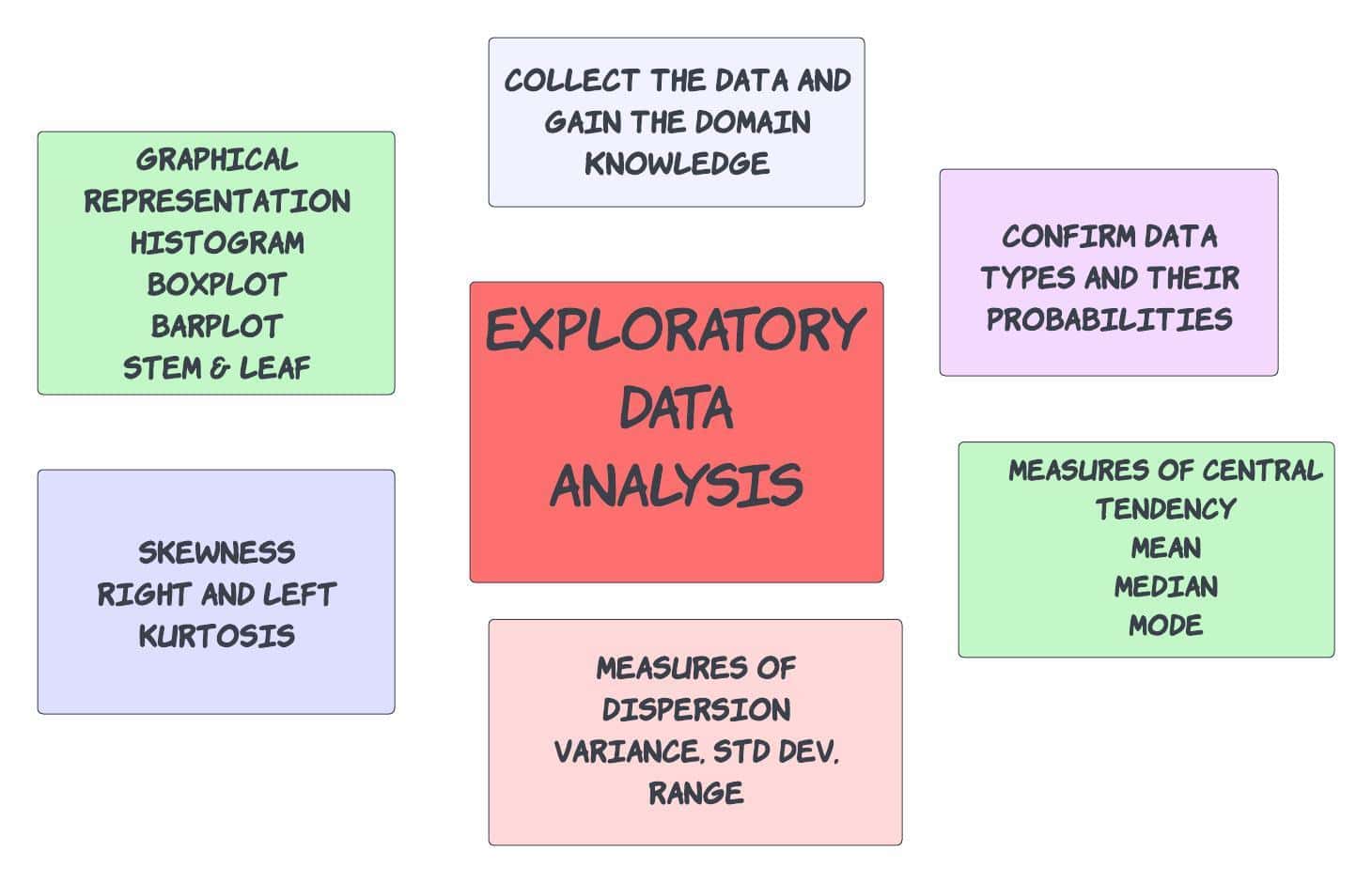
Explanatory data analysis helps data scientists gain a better understanding of the data’s characteristics, identify potential issues or biases, and generate hypotheses for subsequent modeling and analysis steps. It plays a crucial role in guiding the direction of data-driven projects and forming the basis for more advanced analysis techniques.
Data modeling is the process of creating a conceptual representation of data and its relationships within a specific domain. It involves designing a structured and organized representation of data to facilitate understanding, analysis, and efficient storage and retrieval of information. Data modeling serves as a blueprint for developing databases, data warehouses, or data systems:
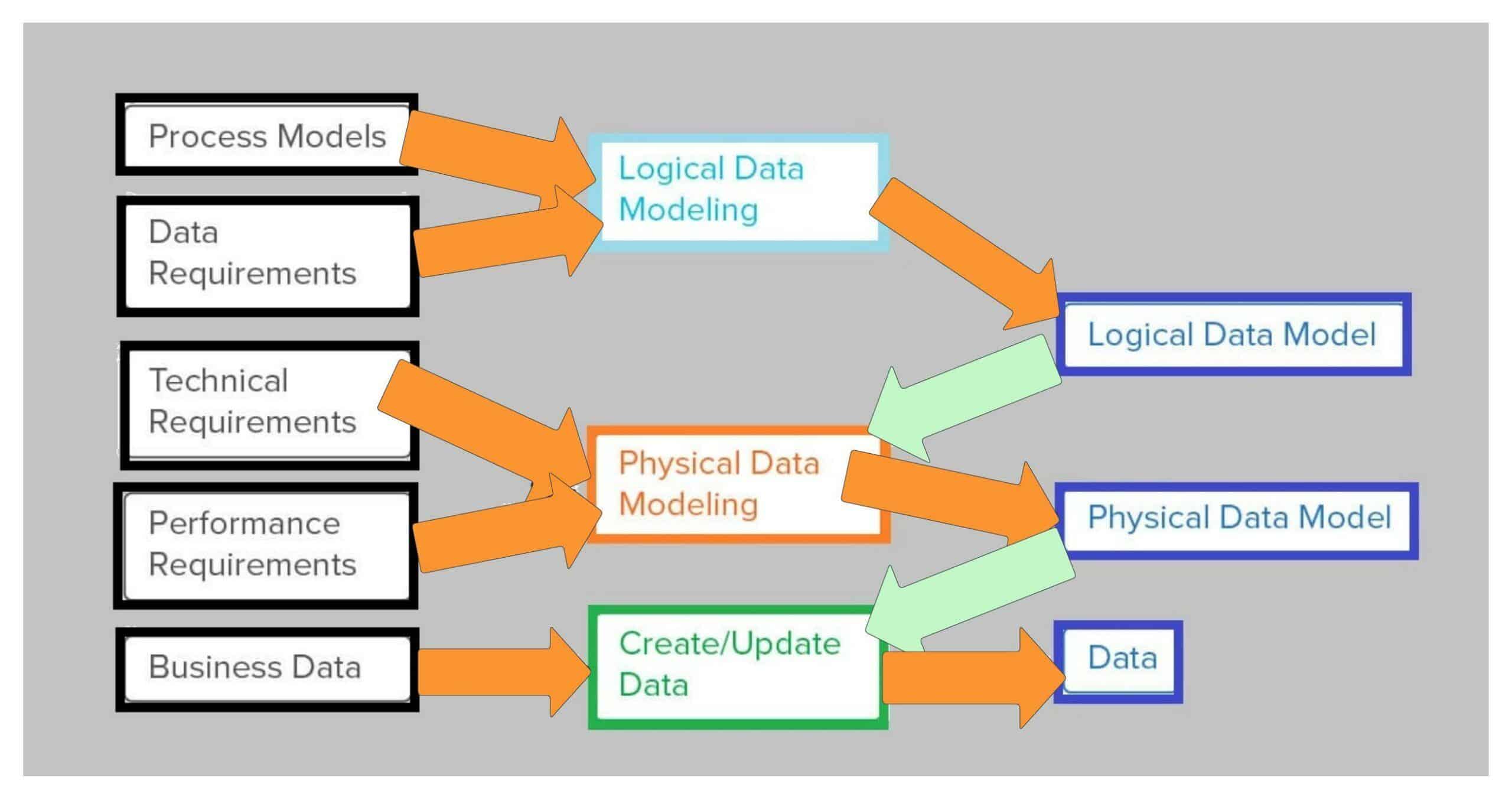
Data modelling ensures data integrity, consistency, and accuracy in database systems. It helps organise and structure data in a way that aligns with the business requirements and enables efficient data storage, retrieval, and manipulation. The resulting data model is a foundation for database design, development, and implementation in various applications and systems.
Data visualization is the graphical representation of data and information using visual elements such as charts, graphs, maps, or interactive visualizations. This step involves transforming raw data into visual representations that are easy to understand, interpret, and communicate:

Here’re some key aspects of data visualization:
Popular tools that are used in data visualization are shown in the following figure. These tools were classified according to ease of use and the programming language skills necessary:
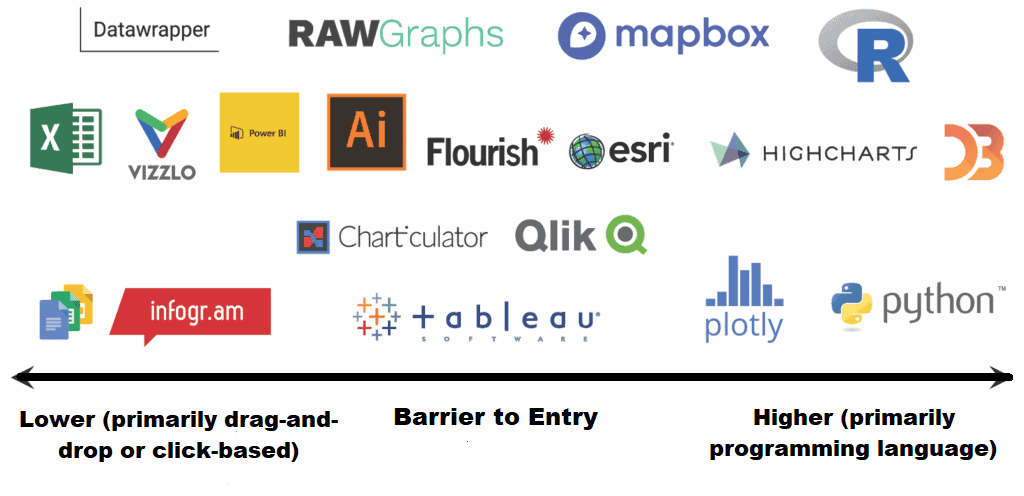
Data visualization plays a crucial role in data analysis, exploratory data analysis (EDA), data storytelling, and decision-making processes. It helps communicate insights, patterns, and trends in a more accessible and impactful way, enabling data-driven storytelling and enhancing data-driven decision-making processes.
Data deployment refers to the process of implementing and integrating data-driven models, algorithms, or insights into operational systems or decision-making processes. It involves putting the results of data analysis or machine learning models into practical use within an organization or application.
Some key aspects of data deployment includes of model implementation, system integration, automation and scalability, monitoring and maintenance, security and privacy, documentation and support.
Data deployment is a crucial phase in the data science lifecycle as it bridges the gap between data analysis and real-world applications. Successful data deployment ensures that the benefits of data-driven solutions are realized, leading to improved decision-making, enhanced operational efficiency, and valuable business outcomes.
Data maintenance refers to the ongoing activities and processes involved in managing, updating, and ensuring the quality and integrity of data throughout its lifecycle. It involves various tasks and practices to preserve the accuracy, consistency, and usability of data over time.
Key aspects of data maintenance contain data quality monitoring, data updates, data archiving, data security, data backup and recovery, metadata management, data retention and deletion.
Data maintenance ensures data reliability, consistency, and usability over time. By actively managing and maintaining data, organizations can rely on accurate and up-to-date information for decision-making, reporting, analysis, and other data-driven activities.
Data science has a wide range of use cases across various industries. The versatility of data science allows it to be adapted to address specific challenges and opportunities in almost any domain where data is available. Here’re some common examples:
These are just a few examples. However, data science has numerous other applications in fields such as finance, transportation, manufacturing, sports analytics, environmental monitoring, and more.
Data science has applications in various industries and domains, including finance, healthcare, marketing, social sciences, cybersecurity, etc. It’s crucial in gaining a competitive advantage in today’s data-driven world.
In this tutorial, we started with the definition of data science. Then, we discovered different aspects of data science.